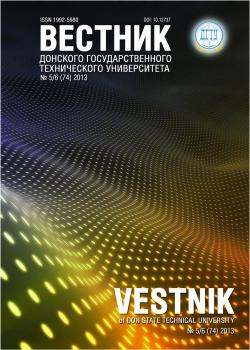The term Insert cross-sector technologies for the cohesive bonding of materials are summarized, such as welding, gluing, and soldering, without which modern technical products will no longer be displayed. Examples from different industries are considered. The economic significance in exemplary countries of Europe and the world is pointed out. The required personnel qualification and the international standardization are discussed.
cross-sector technologies, standardization and certification, personnel qualification, competence man-agement.
1. Introduction: Development of joining technology as a production process.Joining, i.e. the connection of individual components in order to form one unit, is a problem which has concerned people since time immemorial and has stimulated them to very diverse creativity. Just think of the insertion of a handle into a stone with holes in order to manufacture the first hammer, the tying of a stone tip to a wooden shaft in order to increase the effect of an arrow, the weaving and sewing of fabrics and the joining of stones or pieces of wood in order to create whole building structures.
One particular type of joining relates to the so-called material-locking joining of components (as opposed to so-called positive-locking joining) in which the components are joined with each other in such a way that they can no longer be easily separated from each other once again, e.g. by means of adhesive bonding, brazing or, as always, welding.
Today, the industrial production of technical goods, particularly of investment goods, is hardly conceivable without joining technology. Welding, brazing and adhesive bonding are used for the manufacture of household appliances, vehicles of all kinds and electrical and electronic devices as well as for building structures in the private and industrial sectors. Today joining technology accounts for a substantial proportion of the entire manufacturing process of investment goods. Examples are specified onTable 1.
Table 1
Proportion of the value added by welding in some sectors as examples
|
Sector |
Value added by welding |
|
Сonstruction of metal and plastic pipelines |
approx. 3 % |
|
Metal construction |
approx. 5 % |
|
Vehicle construction (motor and rail vehicles) |
approx. 7 % |
|
Shipbuilding |
approx. 8 % |
|
Aerospace construction: (including allied joining technologies) |
approx. 8 % |
(according to internal calculations by DVS / GSI in 2012)
1. ISO 857:1998. Welding and allied processes - Vocabulary - Part 1: Metal welding processes. Date of publication: 1998-12.
2. DIN 8593-6:2003. Manufacturing processes joining - Part 6: Joining by welding - Classifica-tion, subdivision, terms and definitions. Date of publication: September 2003.
3. Definition acc. to “Metalltechnik Lexikon”, www.metalltechnik-lexikon.de.
4. Definition acc. to “Techniklexikon”, www.techniklexikon.net.
5. Fertigungstechnik 2 Bd.2, Hrsg. v. Willy Schal, Verlag: Handwerk Und Technik (Germany).
6. Smallbone, C., Koçak, M., eds. Improving Global Quality of Life through Optimum Use and Innovation of Welding and Joining Technologies, First Edition 2012. IIW, A World of Joining Experience. www.iiwelding.org. - White Paper, 2012.
7. Moos, W., u.a. Gesamtwirtschaftliche und sektorale Wertschöpfung aus der Produktion und Anwendung von Fügetechnik in Deutschland und Europa, SCHWEISSEN UND SCHNEIDEN 65 (2013) Heft 9 (Germany).
8. Japan Welding News for the World (2013).
9. Calculations by DVS and GSI, based on figures by United Nations Report 2013 and Messe Essen.
10. Joining Sub-Platform SRA, Consultation Document, February 2013.





